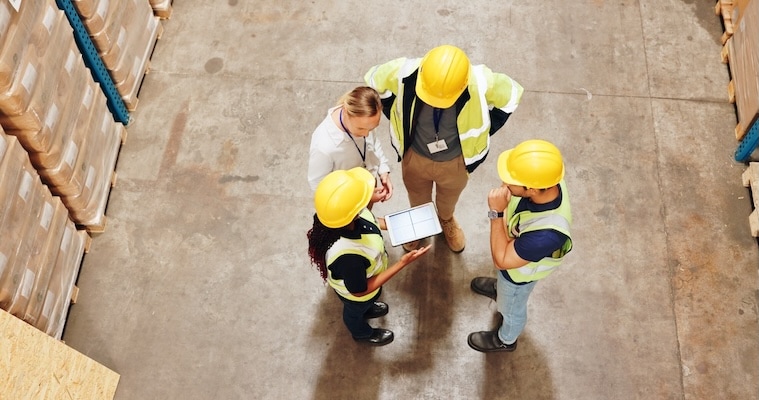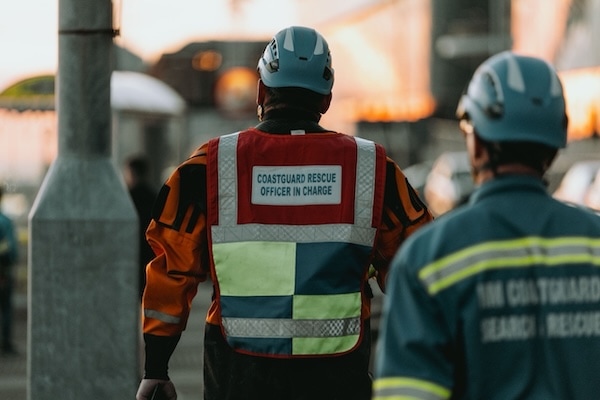In the realm of workplace safety, equipping your organization with the right tools and equipment is paramount to proactively identifying, mitigating, and preventing potential hazards. Building a robust safety arsenal that includes essential hazard-prevention equipment not only enhances employee protection but also fosters a culture of vigilance and preparedness within the workplace. Let’s delve into ten types of critical hazard prevention equipment that can bolster safety measures and safeguard employees effectively.
Personal Protective Equipment (PPE):
- Hard hats, safety goggles, face shields, gloves, and protective clothing are essential for shielding employees from physical, chemical, and biological hazards.
- Respirators and ear protection help prevent respiratory issues and hearing damage in noisy or hazardous environments.
Gas Detectors and Monitors:
- Gas detectors and monitors are crucial for identifying and alerting employees to the presence of harmful gases, vapours, or airborne contaminants.
- These devices help mitigate the risk of gas leaks, chemical exposures, and confined space hazards in the workplace.
Fire Safety Equipment:
- Fire extinguishers, smoke alarms, heat detectors, and fire blankets are indispensable tools for rapid response to fires and emergencies.
- Emergency lighting, escape ladders, and evacuation maps assist in safe evacuation procedures during fire incidents.
Emergency Eye Wash Stations and Showers:
- Eye wash stations and emergency showers provide immediate relief for employees exposed to hazardous chemicals, particles, or substances that may irritate the eyes and skin.
- These stations are critical for quick decontamination and injury prevention in case of chemical spills or accidents.
Fall Protection Gear:
- Safety harnesses, lanyards, anchor points, and guardrails are essential for preventing falls in elevated work areas, construction sites, and industrial settings.
- Fall protection equipment helps reduce the risk of serious injuries and fatalities due to falls from heights.
Safety Signage and Labels:
- Clear and visible safety signage, warning labels, and hazard symbols play a vital role in alerting employees to potential dangers in the workplace.
- Proper labelling of hazardous materials, equipment, and areas helps employees navigate workspaces safely and avoid accidental exposure.
Lockout-Tagout (LOTO) Devices:
- LOTO devices, such as lockout devices, tags, and lock boxes, are used to isolate energy sources and prevent equipment from being inadvertently activated during maintenance or repair tasks.
- Implementing LOTO procedures reduces the risk of electrical shocks, equipment malfunctions, and workplace accidents caused by unexpected energy release.
First Aid Kits and Medical Supplies:
- Stocked first aid kits, bandages, antiseptics, and emergency medications are essential for providing immediate medical assistance to employees in the event of injuries or medical emergencies.
- Accessible AEDs (Automated External Defibrillators) and CPR training further enhance emergency response capabilities and potentially save lives in critical situations.
Noise Control Equipment:
- Earplugs, earmuffs, sound barriers, and noise-cancelling headphones help protect employees from hearing loss and reduce the risk of noise-induced injuries in loud work environments.
- Implementing noise control measures is crucial for maintaining a safe and comfortable work environment while minimizing long-term health effects associated with excessive noise exposure.
Machine Guards and Safety Barriers:
- Machine guards, safety barriers, interlocks, and emergency stop buttons are vital for protecting employees from hazardous machinery, moving parts, and equipment-related injuries.
- Installing physical barriers and safety devices helps prevent accidental contact, entrapment, or crush injuries in industrial, manufacturing, and construction settings.
In conclusion, investing in essential hazard-prevention equipment is a strategic imperative for organizations committed to prioritizing workplace safety, employee well-being, and regulatory compliance. By assembling a comprehensive safety arsenal that includes a range of protective gear, detection devices, emergency equipment, and safety measures, organizations can fortify their hazard prevention strategies, enhance risk management capabilities, and create a secure and resilient work environment for all employees.







